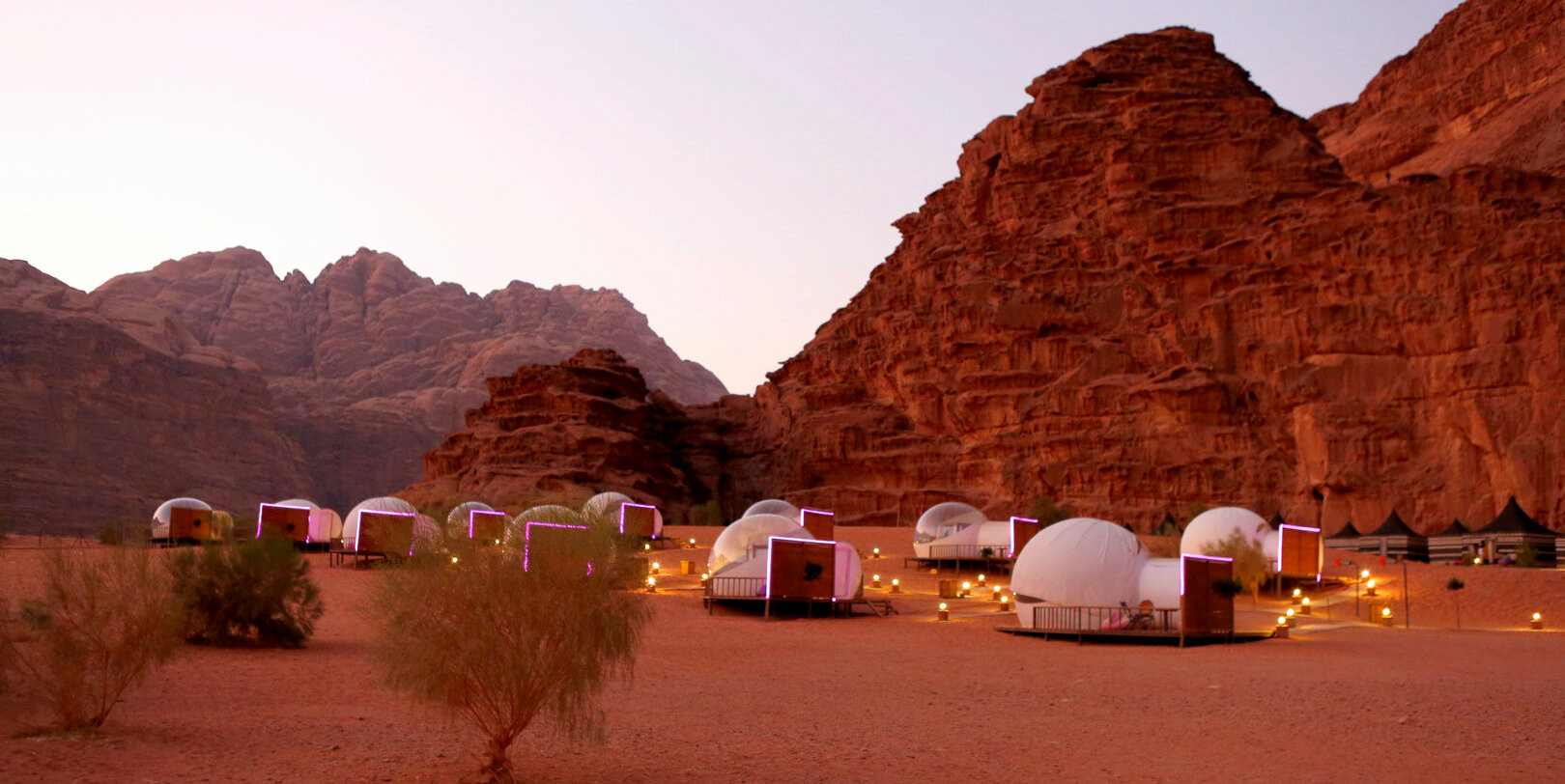Petra
Petra, often referred to as the Rose City due to the color of the stone out of which it is carved, is one of Jordan's most treasured and renowned historical sites. This ancient Nabatean city, located in southern Jordan, is known for its architectural and archaeological significance. Here are some key highlights and historical insights into Petra:

-
Historical Significance: Petra was established around the 4th century BC as the capital city of the Nabatean Kingdom. It thrived as a major trading hub, particularly famous for its trade routes that linked the East and the West, dealing in spices, silk, and other valuable commodities. The Nabateans were also known for their ability to control the water supply in the arid desert, creating an artificial oasis through various water management techniques.
-
Architectural Marvels: Petra is most famous for its rock-cut architecture and water conduit system. The city is accessed through the Siq, a narrow gorge flanked by towering cliffs. This dramatic entrance leads to the city’s most iconic structure, the Treasury (Al-Khazneh), renowned for its elaborate façade carved directly out of the rock face. Beyond the Treasury, Petra expands into a vast complex of tombs, temples, and an amphitheater that once seated thousands of spectators.
-
The Treasury and Beyond: The Treasury is just the beginning of what Petra has to offer. The Monastery (Ad-Deir) is another imposing monument, larger than the Treasury and requiring a climb of over 800 steps to reach its location. The site also features the Royal Tombs, which include the impressive Urn Tomb, Silk Tomb, and Corinthian Tomb, among others.
-
Cultural Impact: Petra’s architecture reflects a mix of indigenous traditions and Hellenistic influences, making it a cultural melting pot of its era. This blend of Eastern and Western architectures makes Petra uniquely significant in the study of ancient civilizations. Moreover, Petra's appearance in popular culture, most notably in films like "Indiana Jones and the Last Crusade," has cemented its status as an iconic global landmark.
-
Modern Day Petra: Today, Petra is a UNESCO World Heritage site and one of the New Seven Wonders of the World. It attracts hundreds of thousands of tourists annually who trek through its dusty trails to witness its historic ruins and stunning natural beauty. Local Bedouins, descendants of the ancient Nabateans, often serve as guides, providing insights into the site's history and their enduring heritage.
-
Visiting Petra: Visitors to Petra can expect a full day of exploration. Early morning or late afternoon visits are recommended to avoid the heat and the crowds. Many opt to visit Petra as part of larger tours of Jordan, which include other key destinations like Wadi Rum and the Dead Sea.
Petra is not just an archaeological site but a testament to human ingenuity and a window into the ancient world, making it a must-visit for history enthusiasts, adventurers, and cultural explorers alike.
Wadi Rum
Wadi Rum, also known as the Valley of the Moon, is one of Jordan's most extraordinary natural landscapes. This vast desert region is celebrated for its stunning sandstone mountains, dramatic canyons, and unique rock formations. It offers visitors a surreal experience reminiscent of a Martian landscape, which is why it has been chosen as a filming location for numerous science fiction films, including "The Martian."
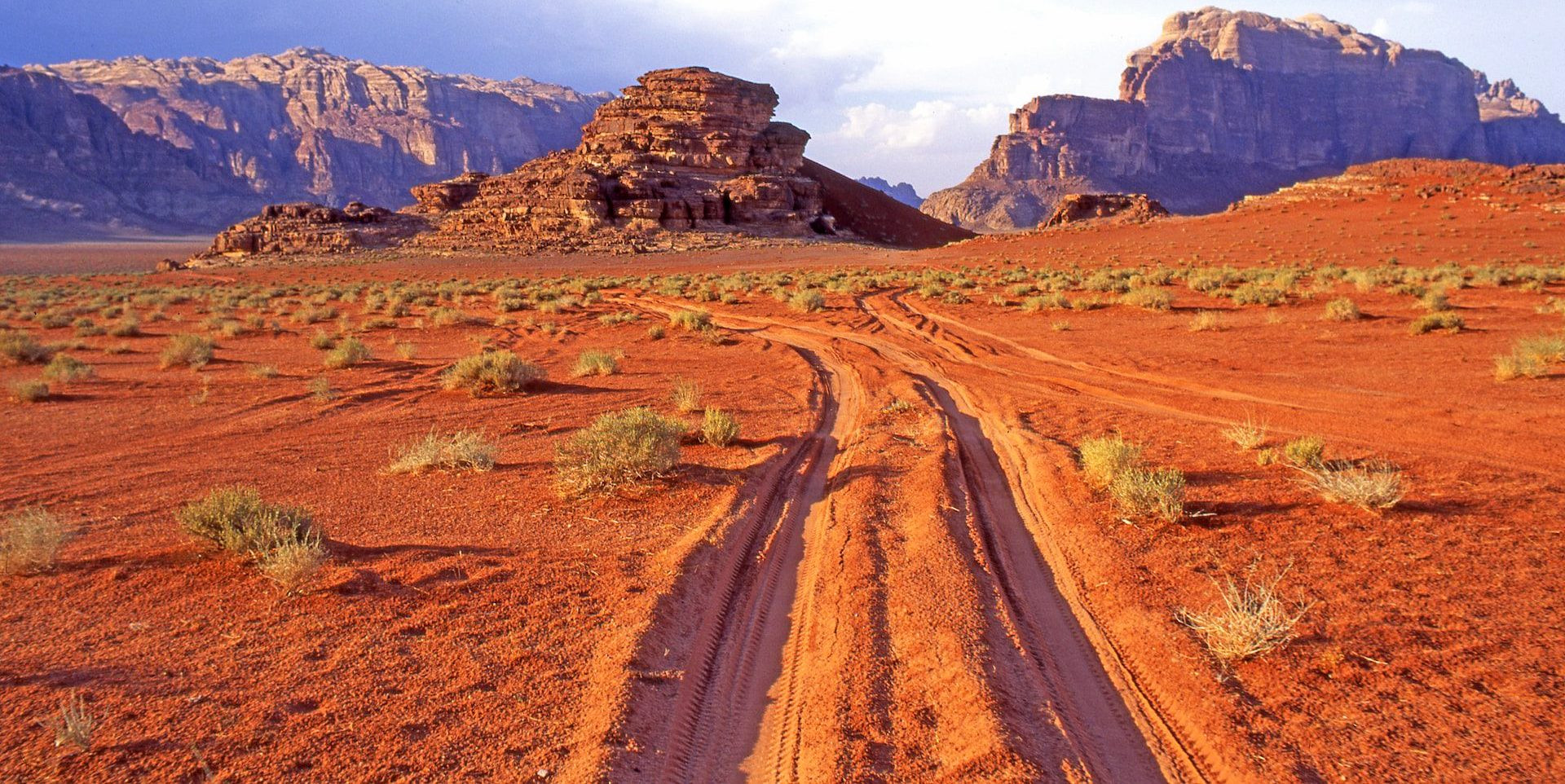
Geological and Historical Significance: Wadi Rum's geological formations are a result of sandstone and granite rock that have been eroded by wind and weather over millennia, creating towering cliffs, narrow gorges, and natural arches. The area is also rich in history, with petroglyphs, inscriptions, and archaeological remains that suggest habitation dating back to prehistoric times. The Thamudic and Nabatean petroglyphs found here offer a fascinating glimpse into the past, showcasing ancient hunting and cultural scenes.
Cultural Heritage: The region is not only a natural wonder but also a cultural one. It has been inhabited by many human cultures since prehistoric times, with the Nabateans and later the Bedouins, who have left their mark on the landscape through rock paintings and structures. Today, it is still home to a number of Bedouin tribes who live in a traditional nomadic lifestyle, offering hospitality and unique cultural experiences to visitors.
Adventures in Wadi Rum
Wadi Rum is a paradise for adventurers. Popular activities include:
-
Jeep tours: These tours take visitors deep into the desert to see the vast, unspoiled landscapes and major landmarks like the Seven Pillars of Wisdom, named after T.E. Lawrence’s book.
-
Camel rides: For a more traditional experience, camel tours offer a slower pace perfect for enjoying the serene desert.
-
Hot air balloon flights: Available at sunrise, these offer a breathtaking aerial view of the desert’s expansive beauty.
-
Rock climbing: With its sheer granite and sandstone cliffs, Wadi Rum is a favored destination for climbers around the world.
-
Hiking and trekking: There are numerous paths and trails weaving through the desert, suitable for all levels of experience.
Conservation Efforts: Recognized as a UNESCO World Heritage site, Wadi Rum is protected under Jordanian law, which helps preserve its pristine environment and ancient carvings. Conservation efforts are crucial to maintaining the natural beauty and historical significance of this unique landscape.
Experiencing Wadi Rum: Visiting Wadi Rum involves immersing yourself in the desert’s natural beauty and silence, which is punctuated only by the winds or a distant camel's call. Most visitors stay in one of the eco-friendly desert camps, where they can experience Bedouin hospitality and enjoy traditional meals under the stars.
Wadi Rum is not just a destination; it’s an experience that connects visitors to the awe-inspiring power of nature and the enduring human spirit that has inhabited this landscape for thousands of years. Whether you're an adventurer, a nature lover, or a history enthusiast, Wadi Rum offers a journey into a truly otherworldly place.
The Dead Sea
The Dead Sea, one of the world's most remarkable natural wonders, is a salt lake bordered by Jordan to the east and Israel and the West Bank to the west. It is renowned for being the lowest point on Earth, sitting at roughly 430 meters (1,411 feet) below sea level. This unique geographical phenomenon is not only a major tourist attraction but also offers exceptional health and wellness benefits.
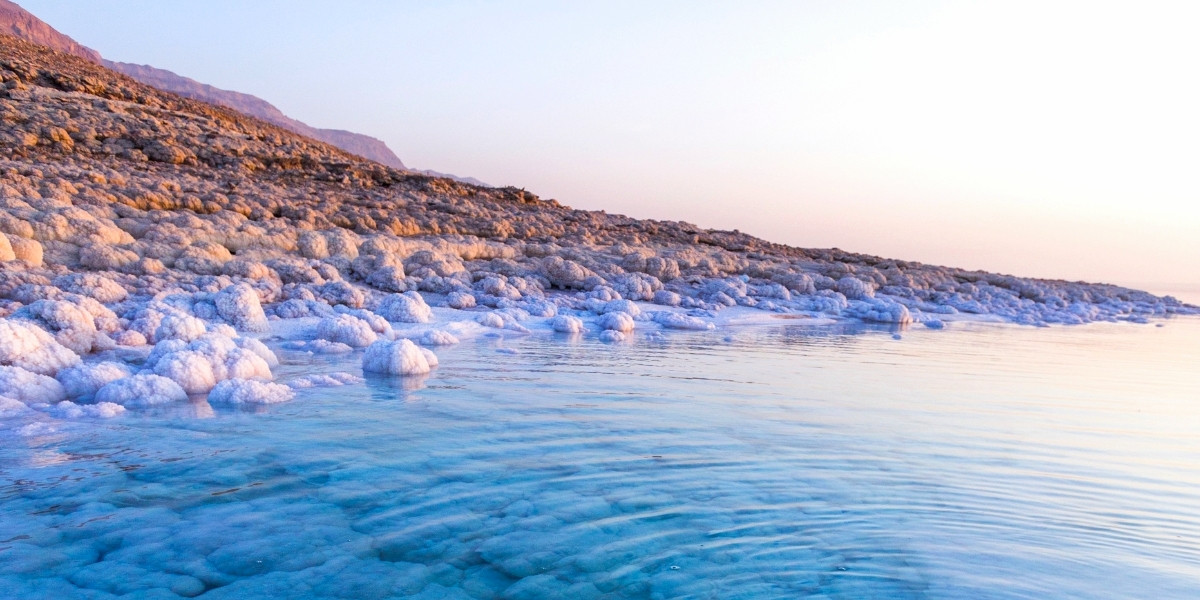
Unique Features of the Dead Sea
-
High Salinity: The Dead Sea is one of the saltiest bodies of water in the world, with a salinity of around 34%. This high salt content prevents aquatic life from thriving, hence the name "Dead Sea." The high salinity also means that people can float effortlessly on its surface, providing a unique swimming experience.
-
Mineral-Rich Mud: The mud from the Dead Sea is rich in minerals like magnesium, sodium, and potassium. This mud is famous for its therapeutic qualities, widely used in skincare and therapeutic treatments for conditions such as psoriasis, acne, and rheumatism.
Health Benefits: The Dead Sea has long been a destination for those seeking relief from various physical ailments. The combination of mineral-rich water, mud, low pollen and allergen content in the atmosphere, reduced ultraviolet radiation from the sun, and increased atmospheric pressure at this low altitude offers therapeutic benefits for skin diseases, respiratory issues, and joint pain.
Tourist Experience
Visiting the Dead Sea offers a blend of relaxation, adventure, and health benefits. Resorts and spas along its shores provide luxurious accommodations and specialized treatments using Dead Sea minerals. Visitors can enjoy:
-
Floating and Swimming: Due to its high buoyancy, visitors can easily float in the Dead Sea without effort. This unique experience is a must-do for anyone visiting the region.
-
Spa Treatments: Many spas offer treatments using Dead Sea mud and salt, including facials, body wraps, and massages.
-
Exploring the Surroundings: The area around the Dead Sea is rich in historical and natural sites, including Masada, an ancient fortress with breathtaking views, and Ein Gedi, a beautiful nature reserve.
Environmental Concerns: The Dead Sea is undergoing significant environmental challenges, including water levels dropping at an alarming rate due to water diversion from the Jordan River (its main tributary) and mineral extraction activities. Efforts are ongoing to address these issues, including proposals to replenish the Dead Sea with water from the Red Sea.
Travel Tips
When planning a visit to the Dead Sea, it's important to:
-
Wear water shoes to protect your feet from the rough salt crystals on the seabed.
-
Avoid shaving or open cuts before entering the water, as the high salt content can cause discomfort.
- Ensure plenty of fresh water is available to stay hydrated in the dry, hot climate.
The Dead Sea is more than just a travel destination; it's a natural spa with historical significance and breathtaking beauty. Whether you're floating in its salty waters, basking in the sun, or treating yourself to a mineral-rich mud mask, the Dead Sea offers a relaxing and rejuvenating experience unmatched anywhere else in the world.
Amman
Amman, the capital of Jordan, is a vibrant city rich in history and culture, serving as a fascinating blend of old and new. Perched on seven hills, Amman is a modern metropolis full of contrasts, with ancient ruins and ultra-modern buildings coexisting in harmony. It's a gateway for tourists exploring Jordan and provides a deep insight into the nation's heritage and contemporary life.
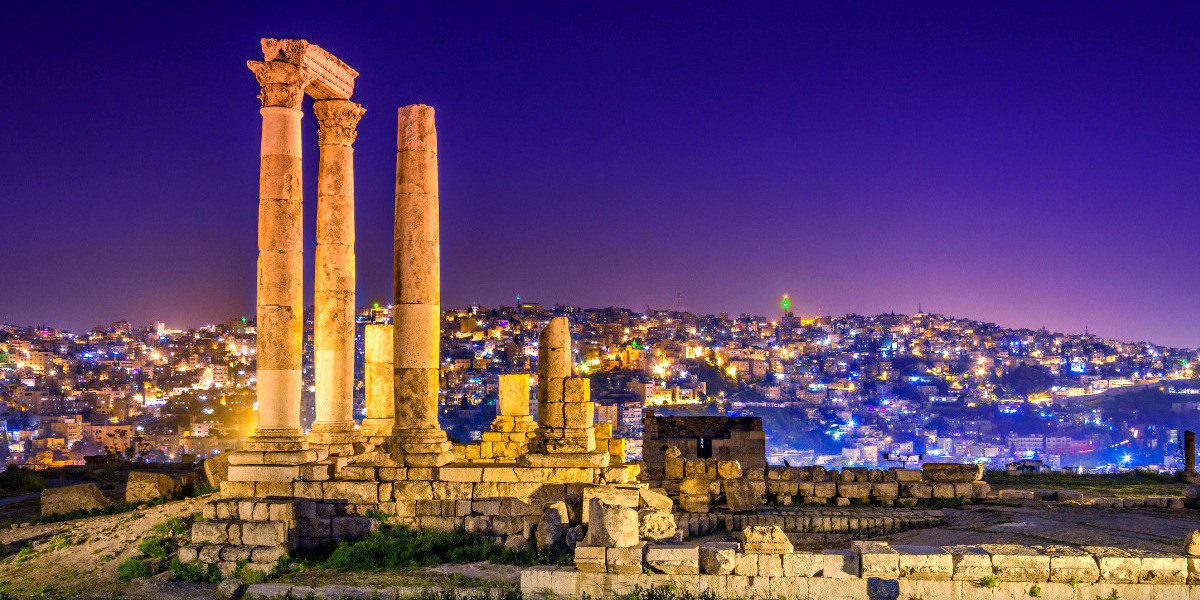
Historical Roots: Amman's history dates back to the Neolithic period, but it became significantly prominent around 7000 BC as the ancient city of Rabbath-Ammon. Later, it was renamed Philadelphia during the Hellenistic period under the rule of Ptolemy II Philadelphus, before reverting to its original name in the Roman era. The city’s rich history is reflected in its diverse architecture and ancient sites.
Cultural and Historical Sites
-
The Citadel: Located on one of Amman's highest hills, the Citadel is a historical site that includes the remains of the Temple of Hercules, the Umayyad Palace, and a Byzantine church. It offers panoramic views of the sprawling city below.
-
Roman Theatre: A 6,000-seat, 2nd-century Roman theatre that is a testament to the city’s ancient history. This magnificent structure is still used today for performances during the warmer months.
-
Jordan Museum: The museum houses some of the most important archaeological findings in Jordan, including ancient scrolls and the famous Dead Sea Scrolls. It provides a comprehensive overview of Jordan's history and cultural heritage.
Modern Amman
Modern Amman is a lively city with a burgeoning arts scene, bustling cafes, and an array of dining options that cater to all palates. The city is also known for its shopping, from traditional souks to luxurious shopping malls.
-
Rainbow Street: A vibrant street in the heart of the city known for its shopping, dining, and nightlife. It's a popular hangout for both locals and tourists, offering a variety of local food, handicrafts, and entertainment.
-
Abdali Boulevard: Part of the new downtown, Abdali Boulevard is a shiny new development that offers high-end shopping, dining, and entertainment options in a modern urban setting.
Culinary Delights: Amman offers a rich culinary landscape, blending traditional Middle Eastern dishes with international cuisine. Visitors can enjoy everything from mansaf, the national dish of Jordan, made of lamb cooked in a sauce of fermented dried yogurt and served with rice or bulgur, to trendy fusion restaurants and everything in between.
Festivals and Events: Amman hosts numerous cultural events and festivals throughout the year, including the Amman International Film Festival and Amman Summer Festival, which showcase both local and international talent in film, music, and performing arts.
Travel Tips: When visiting Amman, it's beneficial to wear comfortable shoes as the city is quite hilly and features many uneven streets. English is widely spoken, especially in tourist areas, making navigation and communication relatively easy for international visitors.
As a city that bridges the gap between the ancient and the modern, Amman offers a unique urban experience enriched with the warmth of Jordanian hospitality. It's not just a stopover but a destination that provides insights into the evolving culture and dynamic spirit of this Middle Eastern country.
Jerash
Jerash, located in the northern part of Jordan, is one of the best-preserved Roman provincial towns in the world. Known as Gerasa in ancient times, the city is famed for its grand colonnaded streets, impressive arches, Roman theatres, and spacious public squares. Today, it stands as a testament to the grandeur of Roman urbanism, showcasing the rich cultural heritage that has been meticulously preserved through the centuries.
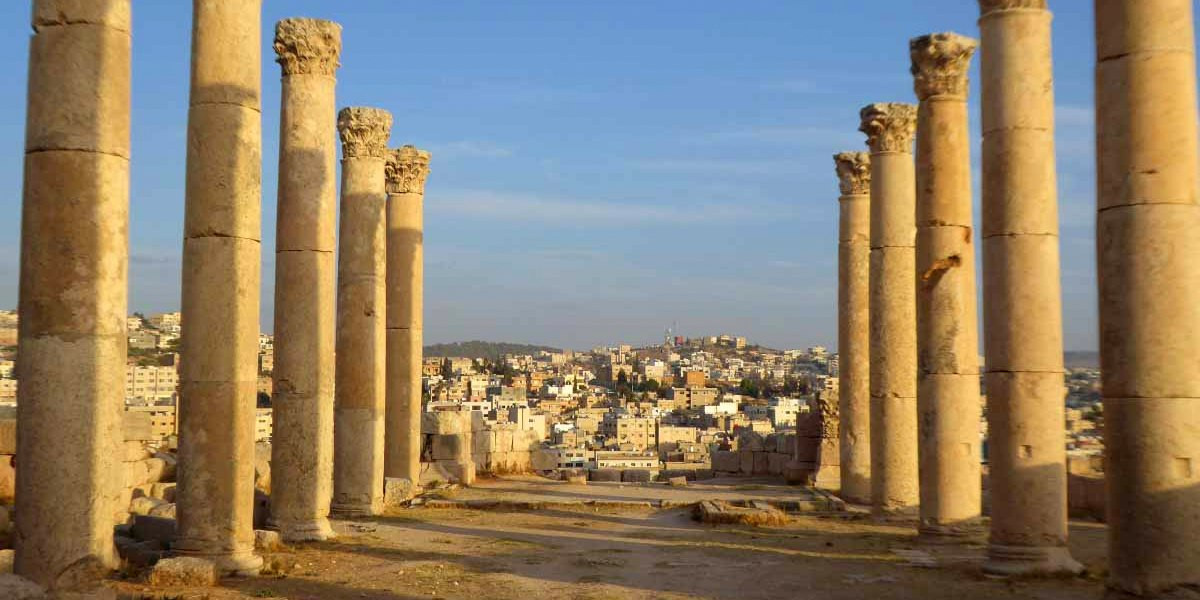
Historical Overview: The history of Jerash extends far back into antiquity, with evidence of settlement as early as the Neolithic period. The city reached its zenith under Roman rule, becoming a major urban center of the Decapolis, a league of Roman cities in the Near East. Prosperity continued under Byzantine administration, during which many of Jerash's churches were constructed, before the city experienced a slow decline in the early Islamic era.
Main Attractions in Jerash
-
The Oval Plaza (Forum): Surrounded by a broad colonnade of 1st-century Ionic columns, this unusual oval-shaped plaza forms a distinctive and photogenic part of Jerash.
-
The Cardo: A 600-meter-long colonnaded street that was once the city's main thoroughfare. The Cardo still bears the ruts of chariot wheels, and its original flagstones make for a dramatic historical pathway.
-
The South and North Theatres: These two large Roman theatres could seat thousands of spectators. The South Theatre, which seats more than 3,000, still hosts performances today, particularly during the Jerash Festival of Culture and Arts.
-
Temple of Artemis: Dedicated to the patron goddess of the city, this temple features towering Corinthian columns and an elevated sanctuary, which are remarkably well-preserved.
-
Nymphaeum: An ornate public fountain that was once adorned with marble panels and sculpted decorations, showcasing the city’s affluence during Roman times.
The Jerash Festival of Culture and Arts: Jerash is not only about ancient ruins. Each summer, the city comes alive with the Jerash Festival of Culture and Arts, an event that transforms the ancient city into a lively venue for concerts, ballet performances, and traditional Arab singing. The festival attracts local and international artists, making it a focal point of cultural life in Jordan.
Visiting Jerash: When visiting Jerash, it is advisable to wear comfortable walking shoes as the site covers a large area with uneven ground. Guided tours are available and recommended to fully appreciate the historical context and architectural details of the ruins. The site is easily accessible from Amman, making it a popular day trip for tourists staying in the capital.
Preservation and Importance: Efforts to preserve Jerash have been ongoing, with several international collaborations working to maintain its structures and expand our understanding of its history. This work ensures that Jerash remains not only a major tourist attraction but also a crucial link to understanding the Roman Empire's reach and influence in the region.
Jerash offers a fascinating glimpse into the past, where visitors can walk through the ruins and imagine life as it was thousands of years ago. Its preservation and presentation make it a highlight of any visit to Jordan, essential for those interested in history, architecture, and archaeology.
Aqaba
Aqaba, Jordan's only coastal city, serves as a vibrant gateway to the Red Sea and is a major draw for both international tourists and local visitors. Nestled at the country’s southern tip, it offers a unique blend of historical sites, modern leisure facilities, and spectacular marine life, making it an exceptional destination for a range of interests.
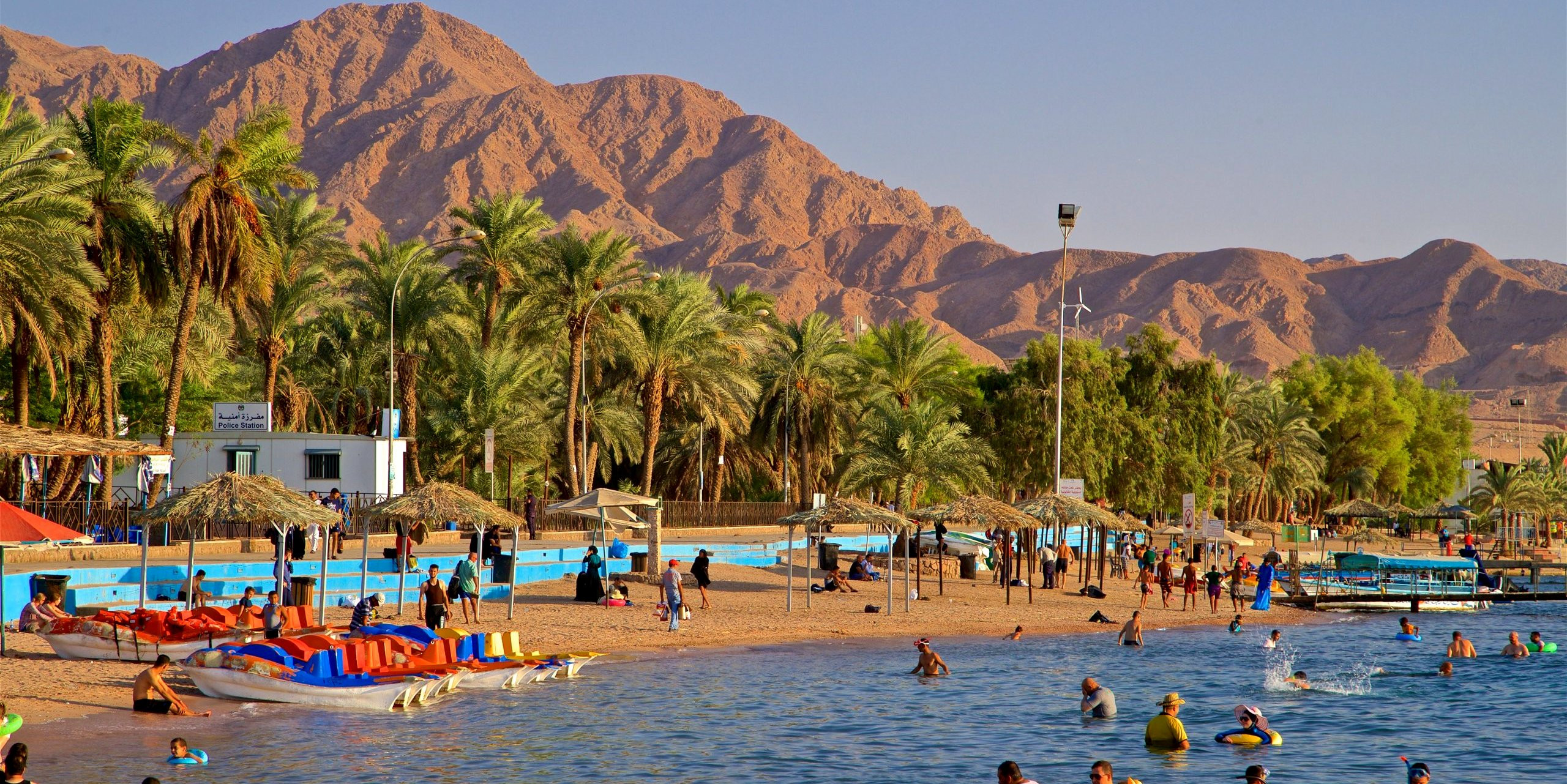
Historical Significance: Aqaba has a rich history that dates back to ancient times when it was known as Ayla. As a historical trade route connecting the Middle East to the Far East and Africa, Aqaba has seen various powers vie for control over its strategic location. The city is also noted for its role in the Great Arab Revolt during World War I, famously led by T.E. Lawrence, or Lawrence of Arabia.
Marine Attractions
-
Red Sea Diving: Aqaba is renowned for its stunning coral reefs and diverse marine life, making it one of the top diving destinations in the world. The warm waters of the Red Sea host an impressive array of sea creatures and underwater flora. Popular dive sites include the Cedar Pride wreck, an intentionally sunken ship that has become a thriving artificial reef.
-
Snorkeling and Water Sports: For those who prefer to stay near the surface, snorkeling provides an easy way to view the colorful underwater world. Aqaba also offers a variety of other water sports, including windsurfing, jet skiing, and sailing.
Modern Developments
Aqaba has seen significant modern development, transforming it into a luxury seaside resort while still retaining its historical charm. The Aqaba Special Economic Zone (ASEZ) was established to encourage investment and tourism, featuring:
-
Luxury Hotels and Resorts: A range of high-end accommodations provides visitors with comfort and excellent services right by the sea.
-
Ayla Oasis: A mixed-use development that includes residential properties, business facilities, and a marina, plus Jordan’s first 18-hole grass golf course designed by Greg Norman.
Cultural and Leisure Activities
-
Aqaba Fort: Also known as Aqaba Castle, this fort was built by the Mamluk Sultan Qansuh al-Ghuri in the 16th century and later used by the Ottomans. It played a significant role during the Arab Revolt.
-
Archaeological Museum of Aqaba: Located within the ancient Aqaba Fort, the museum houses artifacts that trace the city’s history from antiquity to the present.
-
Local Cuisine: Aqaba offers an array of dining experiences that feature local and international cuisines. Seafood, naturally, is a specialty here, with dishes prepared using the freshest catch from the Red Sea.
Accessibility: Aqaba is well-connected by air, land, and sea. King Hussein International Airport offers flights from major regional cities, making it easy for international tourists to visit. Road connections from Amman and other parts of Jordan provide scenic routes into the city.
Environmental Initiatives: Recognizing the ecological importance of its marine habitats, Aqaba has implemented several environmental initiatives aimed at preserving its coral reefs and marine life, including regulations on fishing and marine activities.
Visiting Tips: When visiting Aqaba, it's advisable to respect local customs and dress modestly, especially when visiting cultural sites. The best times to visit are from March to May and September to November, when the weather is warm but not excessively hot.
Aqaba not only offers a retreat with its beautiful beaches and luxurious resorts but also serves as a fascinating historical and cultural experience, making it a must-visit destination in Jordan. Whether you're seeking relaxation, adventure, or a dive into history, Aqaba promises a memorable stay.
Mount Nebo
Mount Nebo is one of Jordan's most revered holy sites and a significant place of pilgrimage for Christians and others interested in biblical history. It is traditionally believed to be the mountain from which Moses saw the Promised Land before he died, as mentioned in the Bible. Located approximately 10 kilometers (6 miles) west of the Roman city of Madaba, this site offers not only spiritual significance but also panoramic views of the surrounding areas, including the Dead Sea, the West Bank, and, on clear days, Jerusalem.
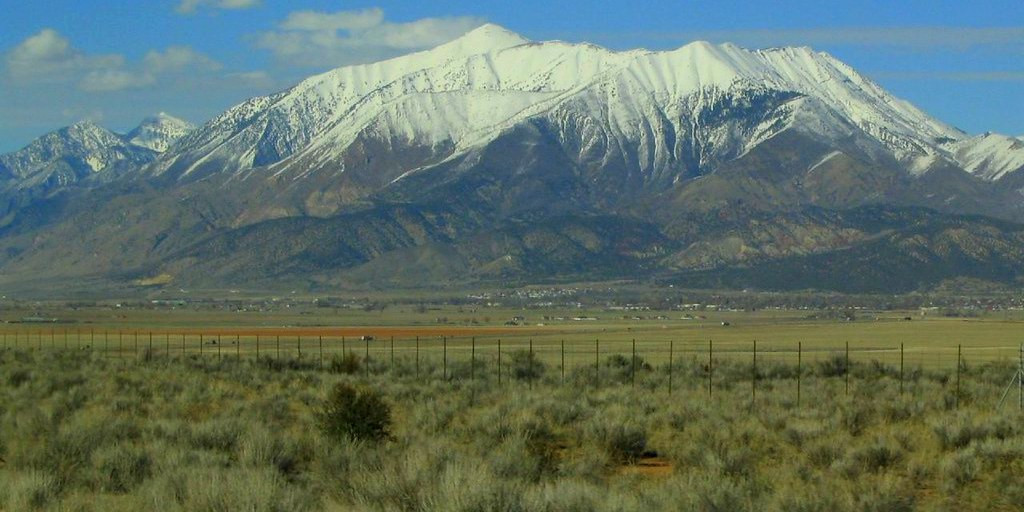
Historical and Religious Significance: Mount Nebo's history is deeply rooted in the biblical narrative. According to the Bible, specifically in the book of Deuteronomy, Moses climbed Mount Nebo as part of his final journey, and from there, God showed him the Promised Land that he would never enter. This site has been a center of Christian pilgrimage since the earliest days of Christianity. The remains of a 4th-century church discovered here testify to the area's ancient religious importance.
Archaeological and Monastic Site
-
Moses Memorial Church: The main attraction on Mount Nebo is the Moses Memorial Church, originally built in the 4th century by early Christians. The church has been expanded into a basilica and underwent significant reconstruction in the 6th century. It houses some of the most beautiful and intricate mosaics in the Middle East, some of which are remarkably well-preserved. These mosaics depict various biblical scenes, pastoral themes, and exotic animals.
-
The Brazen Serpent Monument: Outside the church stands a serpentine cross sculpture, which symbolizes the serpent created by Moses in the wilderness (Numbers 21:4-9) and the cross upon which Jesus was crucified, suggesting a prefiguration of Jesus's crucifixion story.
Panoramic Views: The vista from Mount Nebo is breathtaking and offers a sweeping view that extends across the Jordan Valley and the Dead Sea, over to the rooftops of Jerusalem and Bethlehem on a clear day. This panoramic view makes it clear why this spot was historically and strategically significant.
Visiting Mount Nebo: Mount Nebo is an accessible site for visitors. The newly renovated visitor center provides detailed explanations of the site's history and significance. Walkways and viewing platforms are well-maintained to accommodate tourists and pilgrims who come to soak in the spiritual and historical ambiance of the site.
Environmental and Preservation Efforts: The Franciscan Custody of the Holy Land has been responsible for the preservation and care of Mount Nebo since the late 1930s. Their efforts ensure the archaeological and religious treasures here are preserved for future generations while maintaining the site's sacred character.
Tips for Visitors
-
Best Time to Visit: The best times to visit Mount Nebo are during the spring and autumn months when the weather is cooler.
-
Dress Code: As a site of religious importance, visitors are advised to dress modestly out of respect for its sanctity.
-
Accessibility: Facilities are accessible for those with mobility issues, ensuring that everyone can enjoy this meaningful site.
Mount Nebo remains a place of reflection and inspiration, not only for those of faith but for anyone appreciating the profound historical and natural beauty it offers. Whether you are interested in the biblical history, the stunning mosaics, or just the spectacular views, Mount Nebo is a key highlight for any visit to Jordan.
Madaba
Madaba, often referred to as the "City of Mosaics," is located approximately 30 kilometers southwest of Amman, Jordan. This ancient town is famous for its rich collection of Byzantine and Umayyad mosaics, especially the historically significant and artistically impressive mosaic map of the Holy Land. Madaba offers a unique glimpse into the Middle East's early Christian period and serves as a cultural and tourist hub with its vibrant community and historical sites.
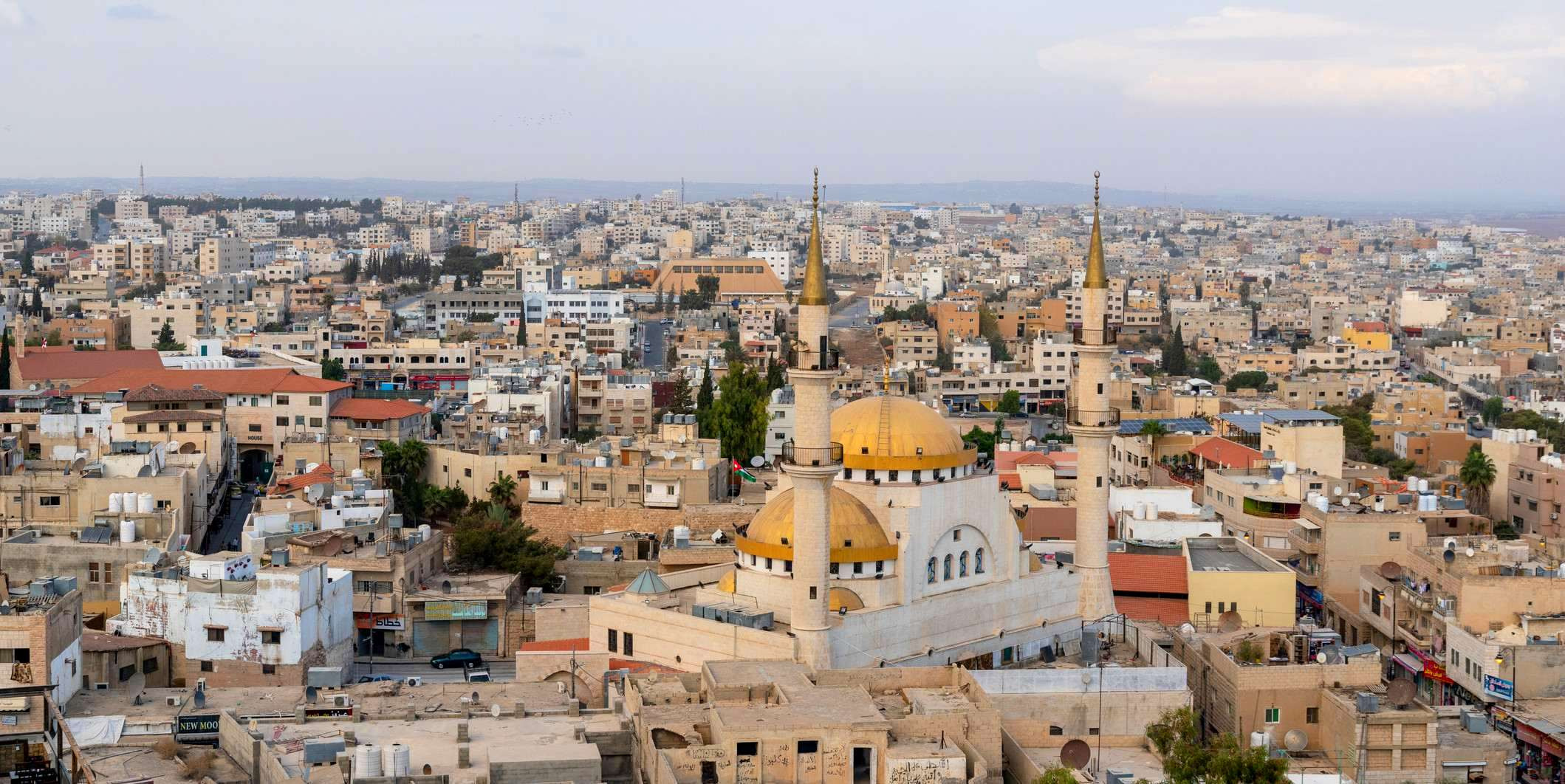
Historical Overview: Madaba's history dates back thousands of years, but it gained prominence in the Byzantine era when it became an important ecclesiastical center. The city is mentioned in the Bible as part of the Moabite territory and was later resettled by Christian Arab tribes from the Karak region in the 19th century. These settlers discovered the mosaics buried beneath the sands, which have since become the city's main attractions.
The Madaba Map
- Madaba Map: Located in the Church of Saint George, this mosaic is the oldest known geographic floor mosaic in art history, dating back to the 6th century AD. It depicts an ancient cartographic representation of Jerusalem and other holy sites of the Middle East, with more than two million pieces of colored stone. The map provides valuable historical insights into the region’s geography during the Byzantine period.
Other Attractions in Madaba
-
Archaeological Park and Museums: Madaba’s Archaeological Park contains other mosaics from the Byzantine and Umayyad periods, showcasing scenes from daily life, hunting, and mythology.
-
Apostles Church: Another significant site, hosting a remarkable mosaic floor depicting scenes from the sea and various animals, believed to date back to the 6th century.
-
Madaba Museum: The museum houses a collection of artifacts and mosaics, offering insights into the area's history and the craftsmanship of its people.
Cultural Significance: Madaba is not just about ancient mosaics; it's a living city with a strong local culture and community. It hosts several cultural events, including the Madaba Mosaic Festival, which celebrates the city's artistic heritage with music, dance, and, of course, mosaics.
Culinary Scene: The city also offers a rich culinary experience with local restaurants serving traditional Jordanian and Middle Eastern cuisine. Visitors can enjoy dishes like mansaf, made from lamb cooked in a sauce of fermented dried yogurt and served with rice or bulgur.
Visiting Madaba
-
Accessibility: Madaba is easily accessible from Amman, making it an ideal day trip destination for those staying in the capital.
-
Accommodations: There are several accommodation options in Madaba, ranging from guesthouses to luxury hotels, catering to all types of travelers.
-
Travel Tips: Visitors to Madaba should consider hiring a local guide to fully appreciate the historical context and artistry of the mosaics.
Preservation Efforts: The preservation of Madaba’s mosaics is a priority for both local and international groups. Efforts are continuously made to protect and restore these invaluable pieces of art and history, ensuring they endure for future generations.
Madaba’s blend of historical artifacts, cultural vibrancy, and welcoming atmosphere makes it a must-visit destination in Jordan. Whether you're a history enthusiast, art lover, or just curious about the past, Madaba offers a fascinating window into the early Christian period of the Middle East.
Dana Biosphere Reserve
Dana Biosphere Reserve is Jordan's largest and most ecologically diverse nature reserve, spanning over 320 square kilometers (124 square miles) in the rugged and picturesque mountains south of the Dead Sea. Established in 1989, Dana encompasses a unique mix of terrain that ranges from sandstone cliffs and rocky slopes to Mediterranean forests and scrublands, making it a haven for nature enthusiasts, hikers, and anyone seeking solace away from the bustling city life.
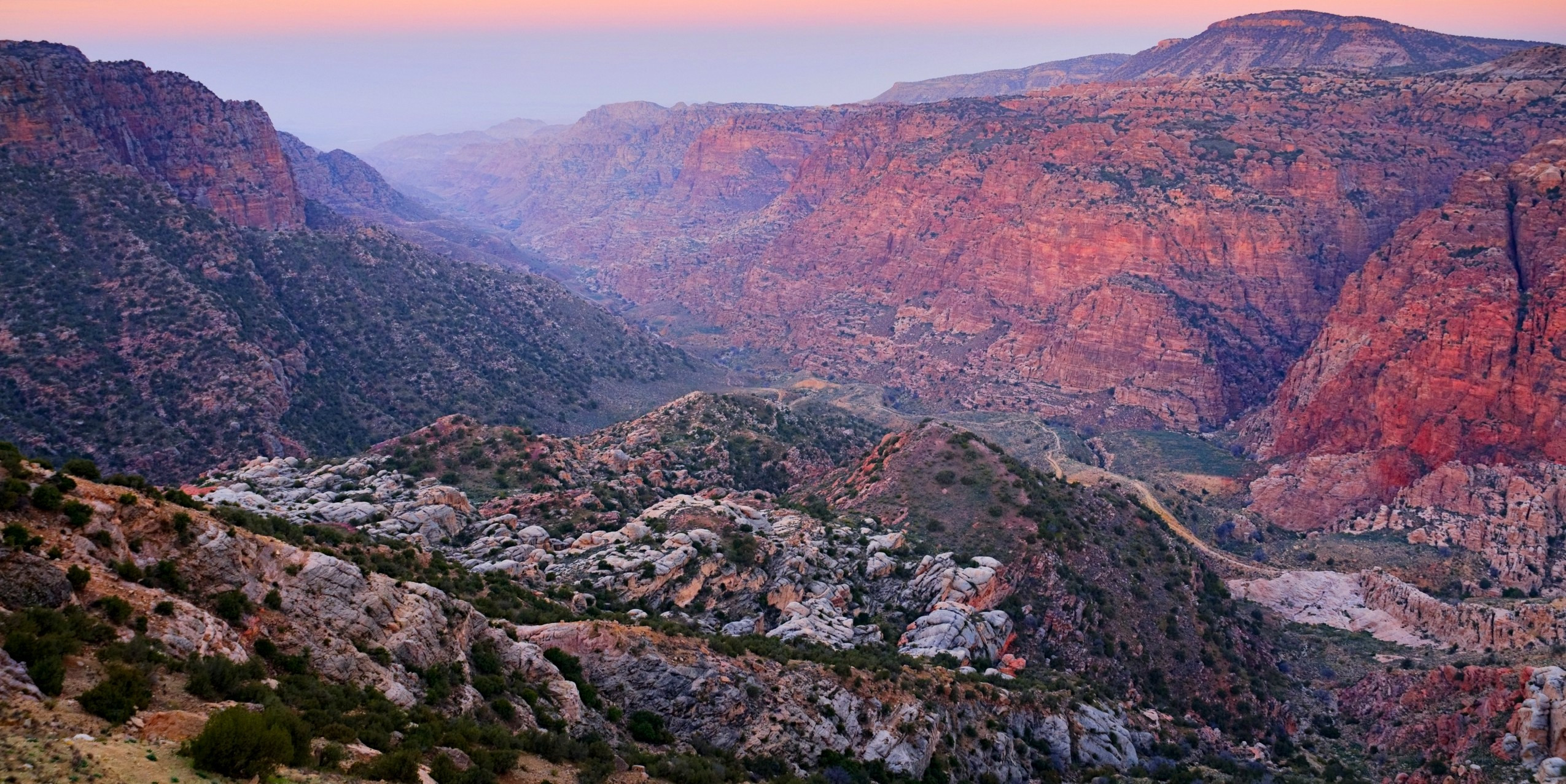
Ecological Diversity: The Dana Biosphere Reserve is notable for its incredible biodiversity. The reserve's varying altitudes and climates contribute to its rich flora and fauna, hosting over 800 plant species (three of which are found nowhere else in the world) and 449 animal species. This includes a variety of birds, mammals, reptiles, and insects, making Dana a critical area for both conservation and scientific research.
Key Attractions in Dana Biosphere Reserve
-
Hiking Trails: Dana offers a range of trails that cater to all levels of fitness and adventure, from short walks to challenging treks. The most famous is the Wadi Dana Trail, which runs from the Dana Village down to Feynan, offering stunning views of the valley and opportunities to spot wildlife.
-
Dana Village: An Ottoman-era village located on the edge of a large cliff, Dana Village provides picturesque views and a glimpse into traditional lifestyles, with several guesthouses and artisanal shops available for visitors.
-
Wildlife Watching: The reserve is a prime spot for birdwatching and observing other wildlife, including the endangered Arabian oryx, Nubian ibex, and the elusive Syrian wolf.
Environmental and Cultural Conservation: Dana is not only a natural reserve but also a project in sustainable development and cultural preservation. The Royal Society for the Conservation of Nature (RSCN), which manages the reserve, has initiated several projects aimed at preserving the environment while providing sustainable livelihoods for local communities. These projects include handicraft workshops that employ local women and eco-tourism activities that educate and engage visitors about conservation.
Visitor Experience: Visitors to Dana Biosphere Reserve can expect a genuinely rustic and educational experience. Accommodations within the reserve range from eco-lodges like the Feynan Ecolodge, which is powered by solar energy and renowned for its sustainable operations and involvement with the local community, to more basic camping options. Nighttime in Dana is particularly magical, offering some of the clearest skies for stargazing, free from light pollution.
Travel Tips
-
Best Time to Visit: The best time to visit Dana Biosphere Reserve is during the spring (March to May) when the weather is mild and the reserve is lush and green, or during autumn (September to November) when the temperatures are cool and comfortable for hiking.
-
Preparation: Visitors should come prepared with good hiking shoes, sun protection, and plenty of water. While the reserve offers basic provisions, it’s wise to bring necessary supplies, especially if planning extended hikes.
-
Guided Tours: To fully appreciate Dana’s natural and cultural heritage, consider joining a guided tour. Local guides provide valuable insights into the area’s ecology, geology, and history.
Dana Biosphere Reserve is a testament to Jordan's natural beauty and its commitment to conservation. It offers a peaceful yet adventurous retreat into nature, where visitors can explore untouched landscapes and connect with the environment profoundly and respectfully. Whether you're hiking through its diverse trails, exploring ancient villages, or simply enjoying the quiet of nature, Dana offers an enriching experience that contrasts and complements the historical and urban attractions found elsewhere in Jordan.
Umm Qais
Umm Qais, located in the far northwestern corner of Jordan, offers a unique blend of ancient ruins, scenic beauty, and cultural heritage. Perched on a hilltop, it overlooks the Sea of Galilee, the Golan Heights, and the Yarmouk River, making it not only a site of historical interest but also a place with stunning panoramic views. Known historically as Gadara, Umm Qais was once one of the ten cities of the Decapolis, a group of Greco-Roman cities in the Eastern Roman Empire.

Historical Significance: Umm Qais boasts an impressive array of Greco-Roman and Ottoman ruins. Its history as Gadara dates back to the 3rd century BC, and it flourished under Roman rule as a cultural and intellectual hub, home to several noted philosophers and poets. The city was famous for its baths, theaters, and colonnaded streets, remnants of which can still be explored today.
Archaeological Highlights
-
The West Theatre: This Roman theatre, which could seat up to 3,000 spectators, offers a glimpse into the social life of Gadara. The theatre's acoustics and structure are remarkably well-preserved.
-
The Ottoman Village: Within the site, the ruins of an Ottoman village that dates back to the 16th century are a reminder of the area's later history. The black basalt stone used in the construction of these buildings gives them a distinctive appearance and tells a story of architectural evolution over the centuries.
-
The Basilica Terrace: Comprising two basilicas and a central courtyard, this area showcases the religious and community life of the ancient Gadarenes. The site also includes a necropolis with underground tombs that date back to the Hellenistic period.
Natural and Panoramic Views: The location of Umm Qais provides visitors with some of the most spectacular views in Jordan. From the site, you can see across the Jordan Valley to the Sea of Galilee (Lake Tiberias), the Golan Heights, and the Yarmouk River, offering a perfect spot for breathtaking sunsets and peaceful reflection.
Modern Cultural Experience: Today, Umm Qais is also known for its efforts in sustainable tourism and community involvement. The site includes a museum housed in an Ottoman-era building that displays artifacts found in the area, providing deeper insight into its long and varied history.
Visiting Umm Qais: Visitors to Umm Qais can enjoy not only the historical tours but also dining experiences that offer traditional local cuisine, often with ingredients sourced from gardens right in Umm Qais. The region is also becoming known for its hiking trails and eco-tourism initiatives.
Tips for Visitors
-
Best Time to Visit: The best times to visit Umm Qais are during the spring (March to May) and fall (September to November), when the weather is cooler and the landscape is lush.
-
Getting There: Umm Qais is located about 2 hours by car from Amman, making it an ideal day trip or a stop on a broader itinerary that includes the Jordan Valley and the Sea of Galilee.
-
What to Bring: Comfortable walking shoes are a must, as the terrain can be uneven. Don’t forget a camera for the stunning views and a hat and sunscreen for protection against the sun.
Umm Qais not only captivates with its rich tapestry of history and panoramic views but also offers a tranquil retreat from the hustle and bustle of Jordan's more crowded tourist spots. It's a place where history, nature, and modern-day Jordanian culture converge beautifully, making it a must-visit destination for those looking to explore beyond the typical tourist paths.
Ideal Time for Best Places to Visit in Jordan
The ideal time to visit Jordan largely depends on the weather and what you're hoping to see and do during your trip. Here’s a breakdown of the best times to visit various attractions across the country:
-
Spring (March to May): Spring is widely regarded as the best time to visit Jordan due to the moderate temperatures and the landscape blooming with wildflowers. The weather is pleasantly warm during the day and cool at night, making it ideal for exploring outdoor attractions like Petra, Wadi Rum, and the Dana Biosphere Reserve. This period is also perfect for hiking and nature walks.
-
Autumn (September to November): Autumn is another excellent time to visit Jordan. Like spring, the temperatures are mild and comfortable, making it ideal for sightseeing and outdoor activities. The crowds are generally smaller than in spring, providing a more relaxed experience at major tourist sites. This season is particularly good for visiting the Jordan Valley and enjoying the harvest season in the northern regions of the country.
-
Summer (June to August): Summer in Jordan can be extremely hot, especially in the desert areas like Wadi Rum and Petra, where temperatures can soar above 40°C (104°F). However, this is a good time to visit the coastal city of Aqaba for snorkeling, diving, and other water activities in the Red Sea, as the water temperatures are warm and inviting. Also, prices for accommodations in other parts of Jordan might be lower during this off-peak season.
-
Winter (December to February): Winter can be quite cold, especially in desert regions and around Petra, where temperatures might drop significantly at night. However, winter is the best time to visit the Dead Sea and explore Amman without the extreme heat that characterizes other seasons. Occasional rain showers can occur, and in some years, there might even be snow, particularly in the highlands and Amman.
Overall, for general sightseeing and outdoor activities, the transitional periods of spring and autumn are ideal for visiting Jordan, offering comfortable weather and the natural beauty of the landscapes at their peak.
With its stunning terrain, complex history, and dynamic culture, Jordan is a enchanting location a traveler should see. Jordan provides a broad variety of sights from the magnificent historic city of Petra to the peaceful Dead Sea. Best times of year would be during the cool springs and fall, perfect for discovering the historical sites and natural beauty. Jordan offers a memorable trip embellished by the friendly hospitality of its people, whether you are a history aficionado, adventure addict, or cultural explorer. Jordan is really a Middle Eastern treasure, set to offer unforgettable experiences with its great historical sites and natural beauty.
FAQs for Best Places to Visit in Jordan
Q: What is the best time to visit Jordan?
A: The best times to visit Jordan are during the spring (March to May) and autumn (September to November) when the weather is mild and conducive to exploring both the historical sites and natural landscapes.
Q: Do I need a visa to visit Jordan?
A: Most visitors will need a visa to enter Jordan. Many nationalities can obtain a visa on arrival at major airports and border crossings, but it is advisable to check current visa requirements specific to your country before traveling.
Q: How many days are needed to see the highlights of Jordan?
A: A minimum of 5 to 7 days is recommended to explore the major highlights of Jordan, including Petra, Wadi Rum, the Dead Sea, Jerash, and Amman. Those with more time can explore further into places like Aqaba, Dana Biosphere Reserve, and Mount Nebo.
Q: Is Jordan safe for tourists?
A: Jordan is generally considered safe for tourists. As with any travel destination, it’s important to follow standard safety precautions, stay informed about the local situation, and respect cultural norms.
Q: What should I wear when visiting Jordan?
A: It is advisable to dress modestly, especially when visiting religious sites and rural areas. Women should consider covering their shoulders and knees, while men should avoid wearing shorts and sleeveless tops in conservative areas.
Q: Can I drink tap water in Jordan?
A: It is recommended to drink bottled water rather than tap water in Jordan to avoid any potential health issues.
Q: What are the must-try foods in Jordan?
A: Don't miss out on traditional Jordanian dishes such as mansaf (lamb cooked in a sauce of fermented dried yogurt and served with rice), falafel, hummus, and maqluba (upside-down rice and vegetable dish). Be sure to try Jordanian sweets like knafeh and baklava.
Q: What cultural norms should I be aware of?
A: Jordanian culture is hospitable but conservative. When interacting with locals, be respectful, and when invited into a home, it is polite to bring a small gift such as sweets or pastries. Public displays of affection should be minimized.
Q: What is the currency in Jordan, and do I need cash?
A: The Jordanian Dinar (JOD) is the currency of Jordan. While credit cards are widely accepted in hotels, restaurants, and large shops, cash is needed for smaller shops and in rural areas. ATMs are readily available in major cities.
Q: Are there any health concerns I should be aware of?
A: No specific vaccinations are required for Jordan, but it's a good idea to be up-to-date on routine vaccines. Visitors should also consider health insurance that covers international travel.
For the Nepal tour, please click here.
If you are looking for different kinds of Nepal Tours or Trekking Packages, feel free to contact us.
